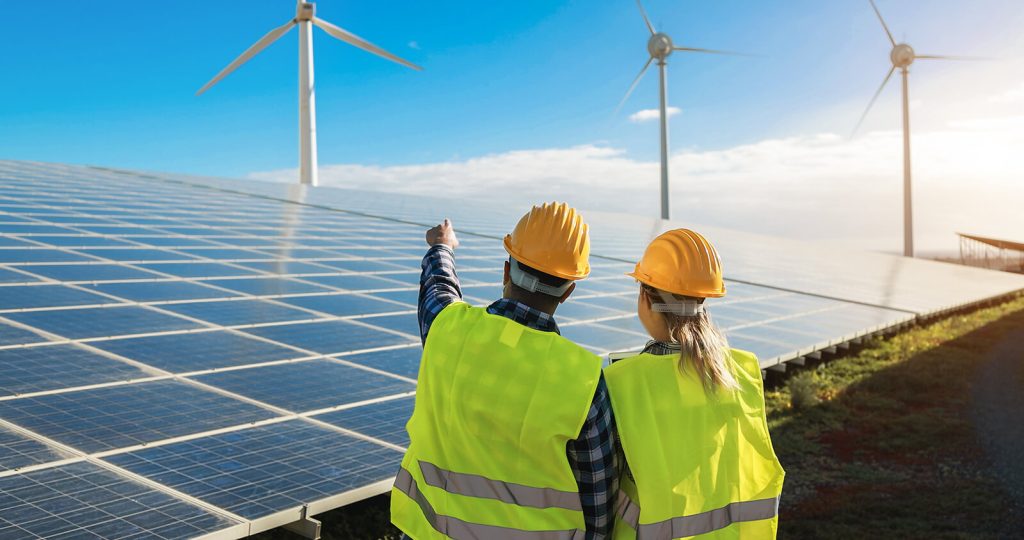
A Brief Overview of the Philippines’ Renewable Energy Landscape
The Philippines has vast untapped renewable energy resources, including solar, wind, hydropower, biomass, and geothermal energy. With an estimated 246,000 megawatts (MW) of untapped renewable energy potential, the country stands as a prime candidate for renewable energy investments. It already ranks as the third-largest geothermal producer globally, after the United States and Indonesia, and holds significant promise in wind and solar energy as well.
In recent years, however, the Philippines’ progress in achieving its renewable energy targets has faced challenges. While the share of renewables in power generation was 34% in 2008, it had fallen to just 21% by 2021. The country now faces a crucial period of transition as it seeks to overcome these obstacles and harness its renewable energy potential more effectively. This is where regulatory reforms come into play.
Regulatory Shifts to Accelerate the Renewable Energy Transition
Full Foreign Ownership in Renewable Energy Projects
One of the most significant regulatory changes is the allowance of full foreign ownership in renewable energy projects. This marks a radical departure from previous policies that required at least 60% Filipino ownership in such projects. Prior to the amendment, foreign investors could only hold up to 40% equity in renewable energy ventures, limiting the potential for large-scale foreign investment in the sector.
With the new policy, foreign investors can now own 100% of the equity in projects related to the exploration, development, and utilization of solar, wind, hydro, and ocean or tidal energy resources. This regulatory shift has opened the floodgates for global investors to participate fully in the renewable energy sector, allowing them to bring in the necessary capital, technology, and expertise to accelerate the Philippines’ clean energy transition.
Enhancing the Investment Climate
The shift to allow full foreign ownership is complemented by an array of incentives designed to make the renewable energy sector more attractive to investors. These incentives, rooted in the Renewable Energy Act of 2008, include:
- Seven-year corporate income tax holidays for renewable energy companies.
- A reduced 10% corporate income tax rate after the tax holiday period.
- Exemptions from taxes on carbon credits generated from renewable energy sources.
- VAT exemptions for the purchase, grid connection, and transmission of electricity generated from renewable sources.
The National Renewable Energy Program (NREP) and Strategic Goals
- A 75% increase in geothermal capacity.
- 160% growth in hydropower capacity.
- The expansion of wind power to 2,345 MW.
- The addition of 277 MW of biomass power.
Overcoming Challenges: Transmission, Infrastructure, and Financing
While the regulatory landscape has become more investor-friendly, there are still substantial challenges that need to be addressed. The Philippine government has made it clear that transmission and grid integration will be crucial in the successful deployment of renewable energy projects. As the country expands its renewable energy capacity, the integration of intermittent energy sources like solar and wind into the national grid will require significant investments in transmission infrastructure, grid modernization, and energy storage systems.
Another significant challenge is financing. To meet its renewable energy targets, the Philippines will need an estimated US$120 billion in investments by 2040. This presents a clear opportunity for foreign investors to participate in funding the country’s energy transition. However, the government will need to ensure that the regulatory environment remains stable and attractive to private capital to facilitate this level of investment.
The Social and Economic Impacts of Renewable Energy
In addition to technical and financial considerations, the regulatory framework also emphasizes the social and economic impacts of renewable energy development. Renewable energy projects, especially in rural and remote areas, can provide much-needed employment opportunities and improve energy access for underserved communities. The Philippine government recognizes that renewable energy development must also support local capacity building, ensuring that local communities benefit from these projects.
Furthermore, renewable energy plays a critical role in the country’s low-emissions development strategy, which is central to its commitments under the Paris Agreement to mitigate climate change. By transitioning to cleaner energy sources, the Philippines can reduce its greenhouse gas emissions, improve air quality, and move toward a more sustainable and resilient future.
The Road Ahead: Monitoring, Adjusting, and Scaling Up
The renewable energy landscape in the Philippines is at a pivotal moment. The regulatory changes made in recent years have opened up new opportunities for foreign investment and growth in the sector. However, achieving the government’s ambitious renewable energy targets will require ongoing efforts to refine the regulatory framework, address infrastructure challenges, and ensure that social, economic, and environmental goals are met.
As the Philippines progresses with its renewable energy initiatives, it will be essential to periodically review the policies and incentives laid out in the Renewable Energy Act and NREP to adapt to new developments in technology, investment trends, and the global energy market. Collaborative efforts between the government, private sector, and civil society will be vital to the success of the Philippines’ energy transition.
The future of renewable energy in the Philippines is bright, with a rapidly evolving regulatory landscape designed to foster growth and attract significant investments. The full opening of the sector to foreign ownership, coupled with a comprehensive set of incentives, positions the Philippines as an attractive destination for renewable energy investments. With continued efforts to improve infrastructure, integrate new technologies, and address social and economic impacts, the country is on track to achieve its renewable energy goals and become a regional leader in sustainable energy development.
As the Philippines pushes forward with its clean energy agenda, the regulatory implications of these changes will shape not only the country’s energy future but also its broader efforts to combat climate change, ensure energy security, and create a sustainable and resilient economy for generations to come.